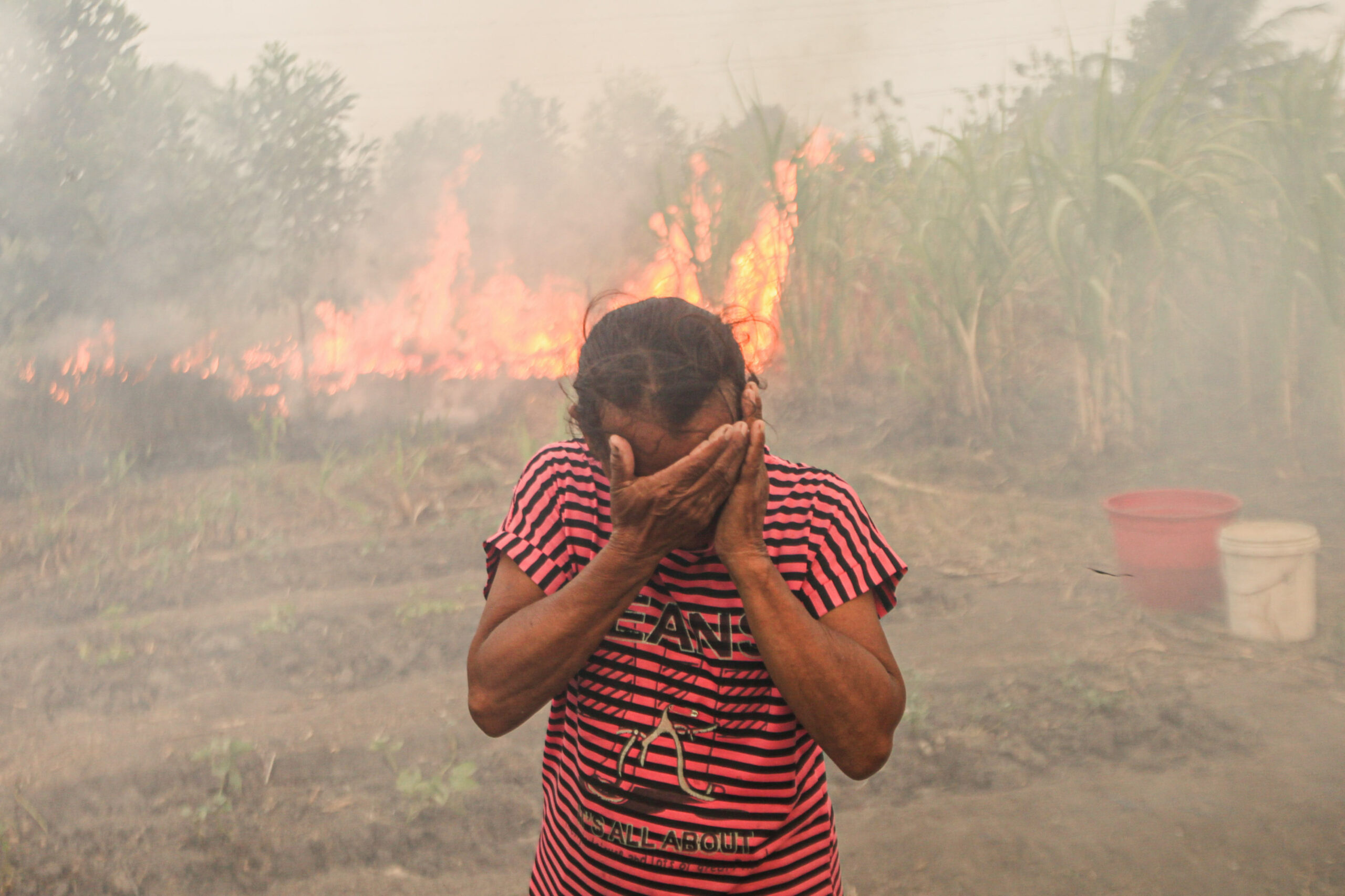

A woman reacts as a wildfire burns at Palem Raya Regency in Ogan Ilir, South Sumatera, Indonesia on September 18, 2023. Indonesian authorities are struggling to put out forest and land fires that have been engulfing many parts of the country, including fire-prone regions in Sumatra and Borneo, as the country enters the hottest day of this year’s El Nino-induced dry season Credit: Muhammad A.F/Anadolu Agency via Getty Images
The month’s shocking surge is likely to make 2023 the hottest year on record and drive extreme impact around the globe. It could also be a harbinger of even higher temperatures next year.
September’s stunning rise of the average global temperature is all but certain to make 2023 the warmest year on record, and 2024 is likely to be even hotter, edging close to the “red line” of 1.5 degrees Celsius of warming above the pre-industrial level that the 2015 Paris climate agreement is striving to avoid.
As of Oct. 10, the daily average Northern Hemisphere temperature had been at a record high for 100 consecutive days. At least 65 countries recorded their warmest Septembers on record, and even after record heat in July and August, the September spike was a shock, said Carlo Buontempo, director of the European Union’s Copernicus climate change service.
“The truth is that I think many climate scientists were absolutely flabbergasted by the plot,” he said of September’s worldwide temperature reading as Copernicus released its monthly global climate report. “This is just beyond anything we’ve ever seen. The anomaly is so incredibly large. You can call it a global heatwave.”
September’s sudden spike to 1.7 degrees Celsius above the pre-industrial global temperature for the month is so far above the trend of rising temperatures and previous records for the month that Buontempo expressed concern that it could indicate a more rapid shift of the climate system to a warmer state.
“I’m not saying that has happened, but I’m saying it is an indication of a process that may not actually be linear at all,” he said.
Many climate scientists say they don’t know exactly why […]
Full article: insideclimatenews.org
Clean water is essential for life, yet millions of Americans unknowingly consume contaminants through their…
Human brains contain higher concentrations of microplastics than other organs, according to a new study, and the…
From the Office of the Governor: In anticipation of a multi-day, significant atmospheric river in Northern California,…
From Governor Newsom: Scientists, water managers, state leaders, and experts throughout the state are calling…
Photo: A harmful algal bloom in Milford Lake, Kansas, made the water appear bright green.…
An expanded plastic foam coffee cup is at a donut shop in Monterey Park, California.…